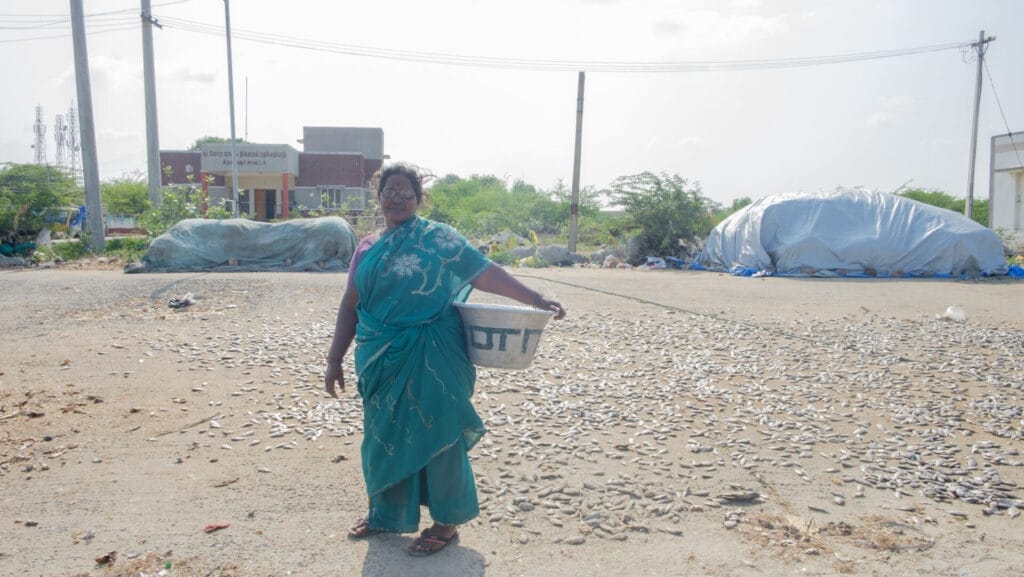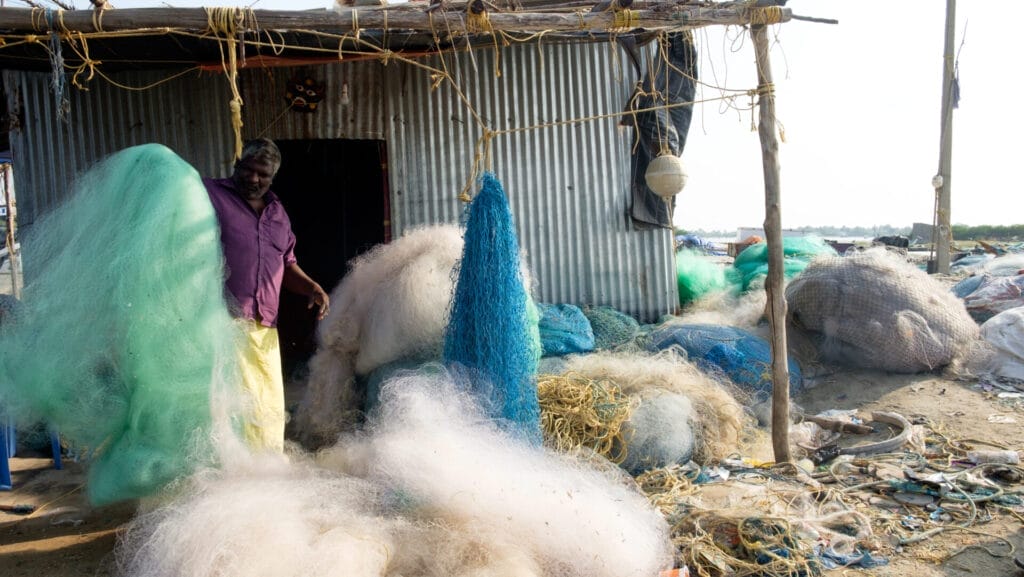Just as the ebb and flow of the Pulicat Lake sustains the fishing community residing in the surrounding villages, the destiny of the people employed in different traditional livelihoods here is intertwined with the fate of the water body.
The people in the 250 villages depend on the rich lagoon ecosystem of the lake, which supports a web of different professions connected to fishing in one way or another. Apart from fisherfolk, who go into the sea to catch fish, there are people who unearth earthworms to sell as baits for fish to the fishers and women who make and sell dried fish.
A salty trade on Pulicat shores

A small group of around 15-20 local women are involved in the making of dried fish (karuvaadu) — for both human consumption and for use as an ingredient in the feed for poultry — on the shores of the Pulicat Lake.
Meena, a 45-year-old resident, who has degrees in chemistry, economics and library science, narrates how the construction of a police station and the fisheries department building on land that has traditionally been used to dry fish for ages, has affected her.
“We get verbally harassed by the police from the station, about the stench emanating from the karuvaadu, almost every other day. We were here much before these buildings came up. But now, the officials want us to vacate this place,” she says.
Read more: Fisherfolk lament as environmental threats push Pulicat Lake to the brink of decline

“They have no regard for the twenty-odd families that are involved in this ancestral business, which fetches us around Rs 15,000 a month. All the toiling in the scorching sun and saline water causes skin allergies from time to time,” Meena adds.

Changing trends in occupation
When asked if they would recommend their next generation to draw sustenance from the lake, most of the locals answered in the negative.
Doss, a 68-year old ex-fisher says,”I never wanted my children to continue in this profession and did my best to educate them. One of my sons works in IT and leads a self-sufficient life, while my other son, who is a fisher, is struggling to make ends meet.”
The village has three schools, of which only one has classes till the twelfth grade. The nearest college is in Ponneri, a town twenty kilometres away.
“With low literacy rates, many youngsters have started migrating to neighbouring towns and cities, in search of contract work. There is no future in living off the lake,” he adds.
Read more: Oil spill in Ennore brings fishing to a standstill
As an alternate profession, some fisherfolk have started taking tourists and bird watchers around the lake, making about Rs. 1,500–2,000 for three to four hours. Some of them have started bird watching themselves and learning species names to cater to the tourists.
Need government assistance

The fisheries department has been providing diesel at subsidised rates of Rs 80/litre to registered fishermen who own a motor boat. “Apart from that, and the money (Rs 6,000) we get during the fishing ban months (two months a year), we don’t get any other assistance from the government,” says Bose, a fisher from Kolatthumedu.
Around 150-200 boats were damaged by Cyclone Michaung. “Officials from the department did an assessment of the damage around December 7, 2023. But, we are yet to receive compensation from the government,” Bose adds.
Neither were they given any proof of the assessment carried out by the officials. Most of the affected fisherfolk, unable to go fishing, are still surviving on aid from various NGOs — a few kilos of rice, wheat, flour and oil.
An official from the fisheries department on condition of anonymity, confirmed that the department has not yet received grants from the government for the same.
On the deteriorating health of Pulicat lake, the official says that the construction of the new training walls, approved by the Tamil Nadu Wildlife Board in November 2023, will help in keeping the bar mouths open, thus preventing the immediate problem of sedimentation.
Conservationists like Yuvan Aves, concerned about Pulicat, argue that the solution does not lie in addressing side effects like sedimentation of the bar mouth alone. “There is a need for a deeper understanding of the factors at play in this human-nature interlinked ecosystem,” he says.
Despite the efforts of conservationists, activists, locals and the government, the future of these fishing communities and their livelihoods, remains largely at stake.